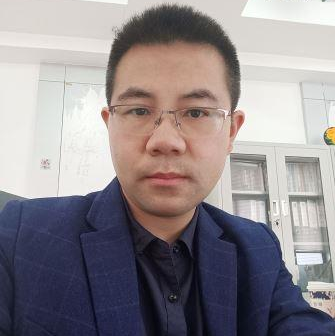Methodology, Microfabrication and Applications of Advanced Sensing and Smart Systems
A special issue of Micromachines (ISSN 2072-666X). This special issue belongs to the section "E:Engineering and Technology".
Deadline for manuscript submissions: 15 May 2024 | Viewed by 14541
Special Issue Editors
Interests: human interface sensor; self-powered sensor; wearable sensor; digital twin; data confusion
Special Issues, Collections and Topics in MDPI journals
Interests: intelligent manufacturing; data fusion; machine vision; quality control
Special Issue Information
Dear Colleagues,
Smart sensing and advanced systems play an important role today, especially the application of sensing in the IoT and with the aid of artificial intelligence. There are plenty of sensor methodologies for various applications, such as in industrial areas, chemical areas, robotics, and sustainable systems. The methodologies contain piezoelectric, piezoresisitve, triboelectric, magnetic, optics, ions, and chemiresisitve. With the help of sensors in all kinds of applications, intelligent process and manufacturing technologies have been on the receiving end of significant research efforts from numerous research groups across the world, which have enabled machine learning algorithms and enhanced calculated performance and multisensor-based intelligent process control systems, such as smart homes, smart factory, decision support system, robotics, etc.
This Special Issue seeks to showcase research papers and review articles in this field and welcomes contributions devoted to the micro/nanofabrication, methodology, integration, and application of artificial intelligence and smart sensors and advanced industrial process systems, with a particular interest in multisensor fusion, machine vision technologies, digital twin technologies, the human–machine interface, virtual reality, machine learning, big data, advanced robotics, and other applications. Topics of interest include but are not limited to:
- All kinds of advanced sensing methodologies;
- The fabrication and materials in sensors;
- Machine learning and multisensor-based industrial process technology;
- Machine-vision-based industrial defect detection;
- Artificial-intelligence-assisted industrial process failure prediction;
- Digital twin application in industrial advanced technology;
- Robotics and intelligent manufacturing application;
- Innovative human–machine interaction for intelligent manufacturing.
Dr. Jianxiong Zhu
Prof. Dr. Zhisheng Zhang
Dr. Haiying Wen
Guest Editors
Manuscript Submission Information
Manuscripts should be submitted online at www.mdpi.com by registering and logging in to this website. Once you are registered, click here to go to the submission form. Manuscripts can be submitted until the deadline. All submissions that pass pre-check are peer-reviewed. Accepted papers will be published continuously in the journal (as soon as accepted) and will be listed together on the special issue website. Research articles, review articles as well as short communications are invited. For planned papers, a title and short abstract (about 100 words) can be sent to the Editorial Office for announcement on this website.
Submitted manuscripts should not have been published previously, nor be under consideration for publication elsewhere (except conference proceedings papers). All manuscripts are thoroughly refereed through a single-blind peer-review process. A guide for authors and other relevant information for submission of manuscripts is available on the Instructions for Authors page. Micromachines is an international peer-reviewed open access monthly journal published by MDPI.
Please visit the Instructions for Authors page before submitting a manuscript. The Article Processing Charge (APC) for publication in this open access journal is 2600 CHF (Swiss Francs). Submitted papers should be well formatted and use good English. Authors may use MDPI's English editing service prior to publication or during author revisions.
Keywords
- artificial intelligence
- smart sensor
- multisensor fusion
- machine vision
- digital twin
- intelligent manufacturing
- advanced robotics







